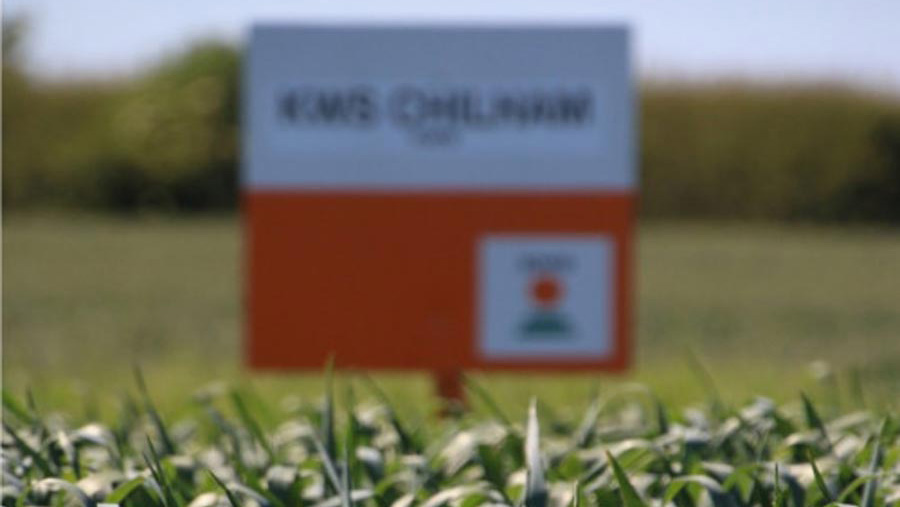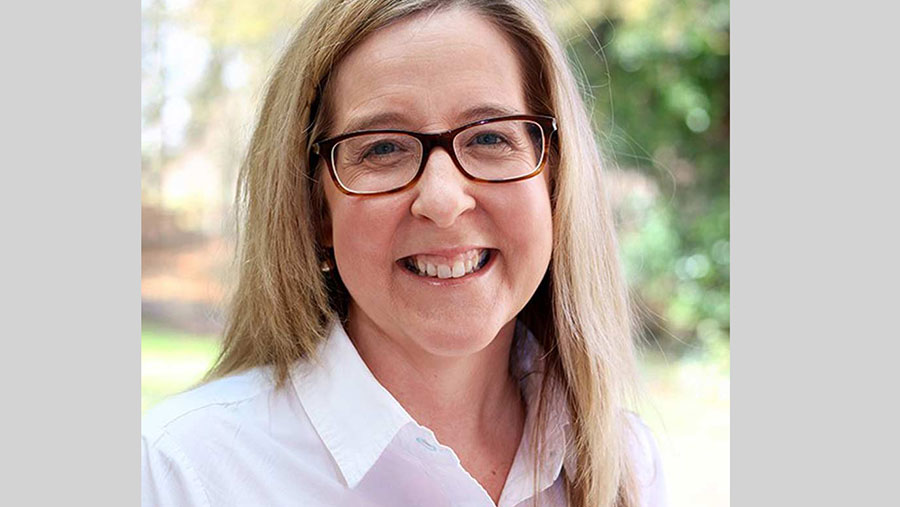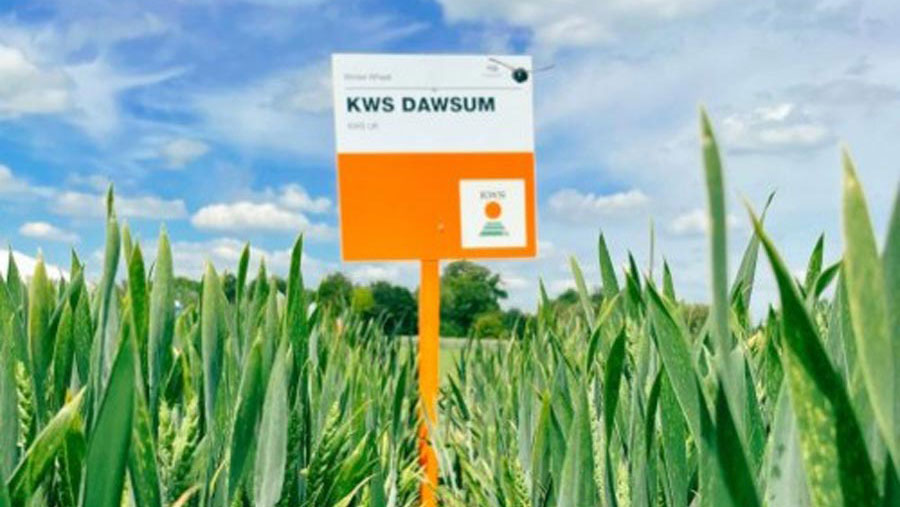Advertiser content
Developing new wheat genetics for a sustainable future
Provided by
KWS is one of the world's leading plant breeding companies combining 165 years of heritage with leading edge technology and a commitment to develop and deliver varieties with the best yields, disease resistance, physical traits and resistance to abiotic stress.
Five new KWS wheats have joined the 2023/24 Recommended List (RL) bringing the total number of the company’s wheat varieties on the RL to 13 offering UK growers a range of production and marketing opportunities.
As an indication of the company’s success in developing wheat varieties to help producers meet the challenges of modern crop production, nearly 40% of the wheats harvested in 2023 will be KWS varieties, says UK country manager Will Compson.
“Our new RL varieties include a top-performing soft Group 4 winter wheat, a super clean Group 2 all-rounder plus three spring-sown milling varieties and these join established high-performance varieties.
“Our varieties span all four production groups, be it premium specification Group 1 milling wheats like KWS Zyatt, varieties with high untreated yields like Group 2 KWS Extase, Group 3 biscuit-making options or outright barn fillers like Group 4 KWS Dawsum.”

Will Compson © KWS
“All the new wheat varieties are examples of our Sowing for Peak Performance (SPP) thinking which continues to deliver new high performing varieties to help growers meet the challenges of the future with a focus on developing genetics that align with improved sustainability and low carbon objectives.”
At a glance…
- Soft Group 4 KWS Zealum adds stiff-straw, early sowing flexibility and distilling market potential
- High-yielding Group 2 KWS Ultimatum brings high untreated yields and the highest resistance to sprouting in the breadmaking sector
- KWS Harsum, KWS Alicium and KWS Lightum set new benchmarks for spring-sown milling options

© KWS
In detail…
KWS Zealum
Recommended for the North of the country, Group 4 soft variety KWS Zealum has an average yield of 102% in this region which rises to over 106% when drilled before September 25th.
Of medium height with very stiff straw, it is ideally suited to the tough growing conditions from Yorkshire up through Scotland with evaluations by the Scotch Whiskey Research Institute (SWRI) showing it is ideally placed to serve the 400,000 tonne distilling market in that region.
With non-Cougar genetics, KWS Zealum has a strong disease package including a 9 for yellow rust, a 7 for mildew resistance, a 6 for sprouting resistance and a 7 for Fusarium resistance, plus it has Orange wheat blossom midge (OWBM) resistance.
KWS Ultimatum
KWS Ultimatum brings the high yield performance growers have come to expect from the KWS Group 2 stable along with excellent grain and field performance, achieving an outright yield of 101% and an untreated yield of 93% of controls for the whole of the UK – just behind the gold standard KWS Extase.
The variety delivers great performance in the second wheat spot, where 60% of milling wheats and 40% of wheat overall is grown, achieving 102% of controls and it performs equally well on heavy and light soils.
An excellent disease package includes a 9 for yellow rust and a 6 for brown rust, giving it a better combination of rust resistances than similar varieties, plus it has Eyespot and Fusarium resistances of 5 and 7 respectively and a 7 for Mildew, adding to its appeal for northern growers.
Quality-wise, it’s a strong all-round contender, with the best resistance to sprouting in the breadmaking sector – very important for growers targeting premium specifications and those in tougher microclimates.
KWS Harsum, Alicium and Lightum spring wheat options
KWS Harsum is a Group 1 variety in the same mould as existing RL variety KWS Ladum, whilst KWS Alicium and KWS Lightum are exciting new Group 2 options.
With one of the best agronomic packages in its class, KWS Harsum is the highest yielding spring-sown Group 1 variety on the RL at 102% of control – just fractionally ahead of KWS Ladum and some 7% ahead of the next variety in the class.
Rated by the UK Flour millers as a Group 1 thanks to its baking performance over the years in trial, KWS Harsum’s good protein content is complimented by a high HFN and the best specific weight in the Group 1 spring sector at 78.3 kg/hl.
Group 2 KWS Alicium couples outstanding yields with fabulous grain quality, breadmaking performance and OWBM resistance and represents a new type of genetics for the spring wheat milling sector thanks to its German parentage.
With a treated yield of 105%, it’s a real high performer with grain quality to match.
A 13.3% protein content, HFN of 346 and specific weight of 80.3 kg/hl really do set a new benchmark for its class – plus it has a solid agronomic performance with an 8 for mildew resistance and a 7 for Septoria.
KWS Lightum is another spring-sown Group 2 variety which offers growers high yields and excellent grain, featuring a protein content of 13.4%, HFN of 325 and specific weight of 78.4.
Like its new KWS stablemates, Lightum also has OWBM resistance coupled with excellent disease resistance, including an 8 for Mildew resistance, 7 for Brown rust and 6 for Septoria, contributing to a strong disease package.
A winning portfolio

Dr Kirsty Richards © KWS
“These new varieties join a portfolio of varieties with a track record of superb results across a range of growing seasons.”
Group 2 KWS Extase remains the variety with the highest untreated yield on the RL at 97% of controls, underlining its spectacular performance seen in fields across the UK in recent years, says KWS UK cereals product manager Dr. Kirsty Richards.
“It’s got a great agronomic package underpinning that untreated yield but it’s a variety that responds well to inputs and its physical properties make it one of the most reliable wheats out there, responding well in a range of growing conditions.

© KWS
“Group 4 KWS Dawsum is another SPP variety that we believe will have a great future, balancing high outright yield, excellent agronomics and the sort of overall resilience and performance that is needed for success in a more sustainable future.
“For a start it’s got high outright yield at 104% of control on the latest RL but it also has a high untreated yield at 95% – just 2% behind KWS Extase.
“This is underpinned by resistance scores of 9 for Yellow rust, an 8 for Mildew and a 7 for Brown rust with robust genetics ensuring it delivers its full potential regardless of soil type, drilling slot and whether it’s a first or second wheat – plus short stiff straw further adds to its overall resilience.”
